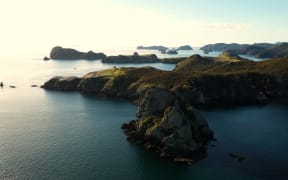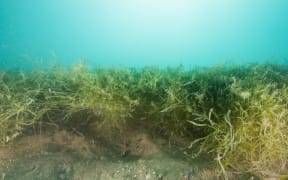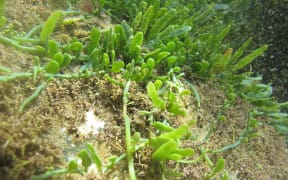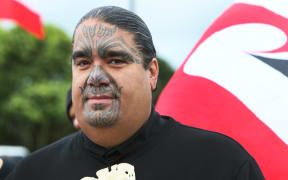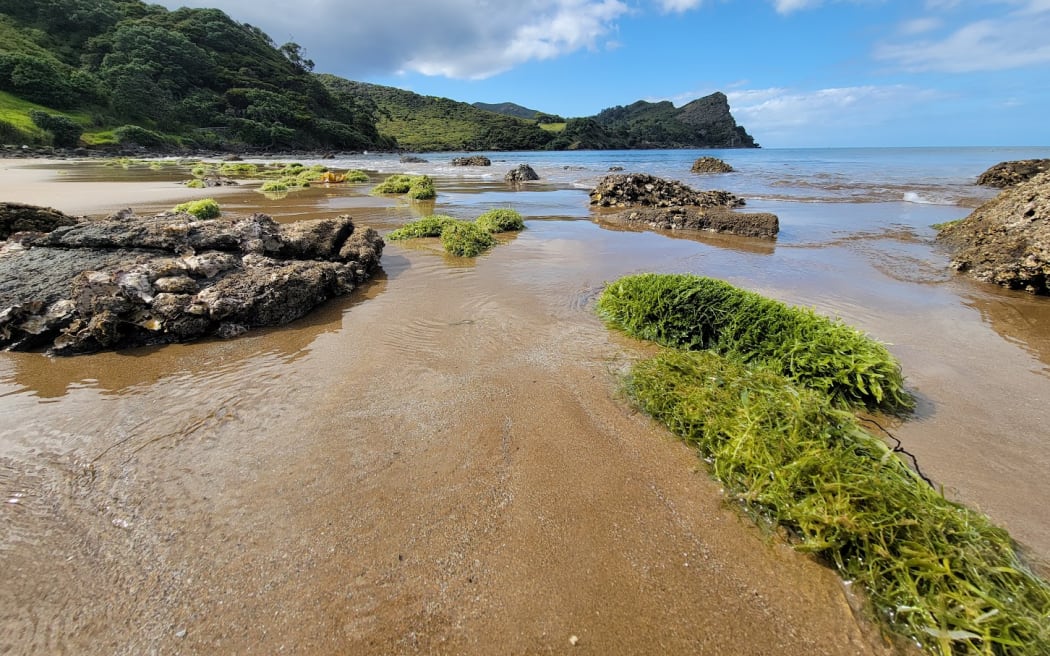
Photo: Sid Ware / Ministry for Primary Industries
A new patch of invasive seaweed on Great Barrier Island has ecologists blaming the government's slow response.
The first patch of the exotic caulerpa breed was discovered on the island in June 2021 by a local botanist.
But since then, retired biochemist Barry Scott accused the Ministry for Primary Industries of doing little to stop the spread.
"They were very quick to put in place these so-called controlled area notices, where they close off the area to anchoring and fishing," he said.
"But since then there's been very little done in the actual sea to try and control it."
However, Biosecurity New Zealand said they were trialling new methods to remove caulerpa, on top of work they were already doing, because expert advice suggested eradication was not feasible at this stage.
Scott, an Emeritus Professor of molecular genetics at Massey University, said the seaweed had spread rapidly in the past two years.
"The biggest concern about it is it just grows so fast, something like one centimetre per day," he said.
"The roots of it grow along the surface of the sand, and it just spreads so rapidly and smothers everything on the seabed."
Allowing it to spread further could have catastrophic consequences, he said.
"Our biggest concern now is it will spread right through the Hauraki Gulf, and that'd have a huge impact on the economic, cultural, and environmental state of the gulf and further up the East Coast."
Scott hoped Shane Jones, the new Minister for Oceans and Fisheries, would tackle the issue.
"We're two and a half years into this infestation and there's still no national strategy," he said.
"We've prepared a briefing for the incoming minister and one of the key things we're looking for is the empowerment of local communities."
The locals were eager to get involved, Scott said.
"Get some resources to the locals to get them to help, there's lots of willing helpers to help with surveillance," he said.
"Then get some groups trained up to start removing it, particularly where there's small patches."
Biosecurity New Zealand readiness and response director John Walsh said the ministry was trialling methods to remove caulerpa.
"Independent scientific experts, as well as our own scientists, have advised eradication is simply not feasible given the scale of the infestation and the lack of useful tools," he said.
"Nobody in the world has managed to eliminate this pest in the open ocean at the scale and depth we have it here."
Biosecurity New Zealand's work included diver surveillance, controlled area notices and public information campaigns, Walsh said.
The agency was testing suction dredge treatment as a way to remove Caulerpa on a large scale, but this method was still in the trial phase.
"We are working closely with the affected communities and join with them in a desire to achieve the best possible and realistic outcomes," Walsh said.
